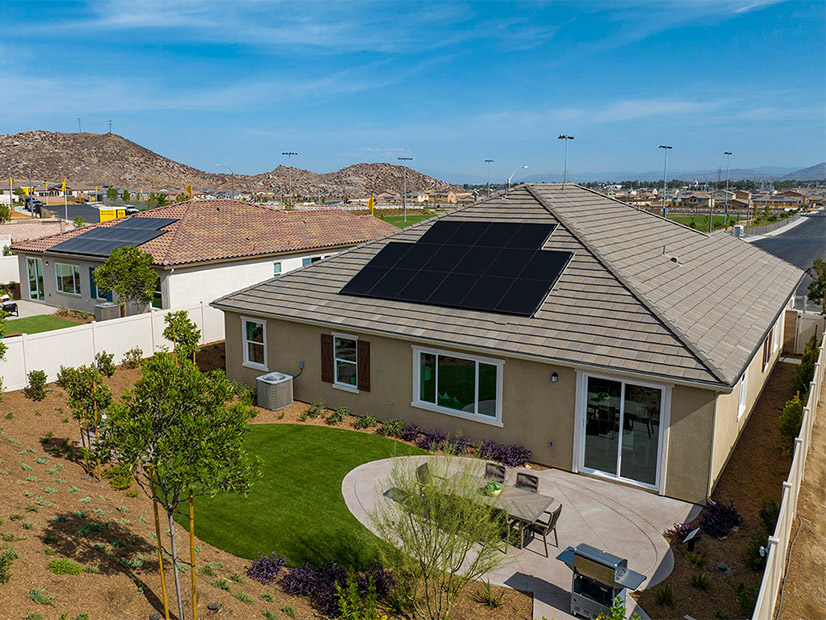
Residents will soon be moving into a new microgrid community of 219 single-family homes in Southern California — a project that’s being called first of its kind in the state.
SunPower worked with KB Home and other partners on the project, which was awarded a $6.65 million Connected Communities grant from the U.S. Department of Energy last year.
The 219 homes will be built in two neighboring KB Home subdivisions, Oak Shade and Durango, in the Riverside County city of Menifee, about 80 miles east of Los Angeles.
Each of the all-electric homes will be solar powered and have individual battery storage. In addition, they’ll be connected to a microgrid powered by a large, shared community battery.
“This project may be the blueprint to follow for building new decarbonized homes of the future,” DOE said in announcing the award.
How It Will Work
Each home will receive electric utility service from Southern California Edison (SCE), which is a partner in the project. The homes will also come with controls that can isolate them from the grid during a power outage.
During an outage, the homes will draw energy from their own battery systems or from the community battery. The systems are designed to support critical loads including lights, refrigeration and Wi-Fi, as well as high-capacity loads such as hot water and space heating and cooling. SunPower called the homes “power-outage resistant.”
The project will be a “true microgrid,” in which the all-electric homes can be disconnected and reconnected to the grid, a SCE spokesperson told NetZero Insider. SCE checked with other major utilities to confirm the project’s uniqueness in California, the spokesperson said.
The Durango and Oak Shade subdivisions will have separate microgrids that can be connected when it benefits both communities, according to the Advanced Power and Energy Program (APEP) at the University of California, Irvine, another project partner.
APEP will collect data from the communities and research ways to improve the technologies for future projects. The university will also ensure that the microgrid controller meets national standards.
Some of the homes will be used to demonstrate “vehicle-to-home” charging, in which an electric vehicle can be used as an additional energy source for the home during an outage.
Residents will have an option to sign up for a Virtual Power Plant (VPP) program, in which their battery storage, EV chargers and other flexible loads can be automatically dispatched to the grid. VPP participants may be eligible for compensation.
In addition to solar-plus-storage systems, each home will be equipped with high-efficiency appliances and flexible loads such as electric heat pump water heaters and space heating and cooling systems. Project partner Schneider Electric will provide smart load panels and connected wiring devices that integrate and control the distributed energy resources.
Construction Underway
Construction started a few months ago on the homes at Durango and Oak Shade, according to a KB Home spokesperson. About 50 houses have been sold so far, and residents will start moving into their homes in February or March.
The three- to five-bedroom homes range from 1,472 to 2,906 square feet and most are priced in the $500,000 range, according to KB Home’s website.
SunPower’s project was one of 10 that received “connected communities” grants from DOE last year totaling $61 million. (See ‘Connected Communities’ Get $61M in DOE Funding.) Connected communities tie together a group of grid-interactive efficient buildings (GEBs).
DOE is hoping the demonstration projects will accelerate the technology development, commercialization and deployment of GEB systems across a range of locations, climates and building types.


